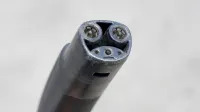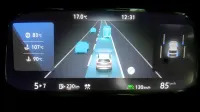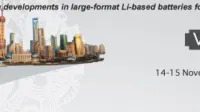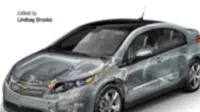Sae International
Saving fuel in the summer? Turning off AC might not be the answer
Opening car windows may do more to reduce a vehicle's fuel efficiency than turning on the air conditioner.
2015 Supermileage winner hits 2,098 mpg
Quebec's Université Laval wins the SAE International Supermileage contest.
SAE announces J2601 hydrogen fueling standard
Standardizing refueling systems isn't a quick process, and a new set of fueling standards for hydrogen stations were about 13 years in the making. But SAE International (SAE stands for Society of Automotive Engineers) said this week that it finally settled on a hydrogen refueling standard for light-duty vehicles. For the record, it's called SAE J2601.
SAE sets standards for DC Combo fast charging
As fast-charging standards go, it looks like the Atlantic's finally covered.
SAE working on new J1772 combo coupler standard for plug-in vehicles
Sometime during the first quarter of 2012, SAE International says it will officially establish a worldwide standard, calling for an integrated coupler for plug-in vehicles. The SAE says this J1772 combo coupler will allow plug-in vehicles to be charged from either a conventional, 15-amp AC wall outlet or a DC connection of up to 90 kilowatts.
SAE International to hold 2011 Vehicle Battery Summit in Shanghai
The SAE International 2011 Vehicle Battery Summit, to be held in Shanghai, China, will draw together some of the world's leading engineers, scientists and corporations to discuss breakthroughs in battery technology, electric and plug-in hybrid vehicle commercialization efforts and China's pivotal role in the development of lithium-ion batteries.
SAE Supermileage competition kicks off today; mpg to beat is 2,340
SAE International's 2011 Supermileage competition kicks off today with technical inspections and practice runs. The competing vehicles, possibly the envy of eco-conscious drivers across the nation, routinely achieve a fuel efficiency rating of more than 2,000 miles per gallon. These fuel-frugal vehicles will partake in the event which is being held at the Eaton Corporation Marshall Proving Grounds in Marshall, MI.
SAE International book details development of Chevrolet Volt
One of the automotive engineering industry's most storied vehicles, the Chevrolet Volt has been the focus of thousands of articles, including hundreds on AutoblogGreen, over the past four-plus years as it moved from a wild-eyed concept to real Eric Loveday
SAE's latest Hybrid-Powered Vehicles book claims gas-electrics will be 75 percent of the market in 2030
The SAE International has released the second edition of its Hybrid-Powered Vehicles book, which builds upon the original's exploration of hybrid components, system engineering, design constraints, challenges, and opportunities for hybrid vehicles. It was high time for an update, since the first edition was published way back in 2003 when, if we remember correctly, hybrids were vehicles that used both a horse and a donkey.










